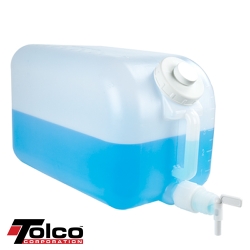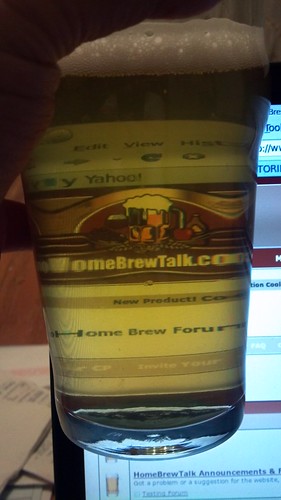I've been brewing with Winpaks for at least a year. Switched to a different product from US Plastics that has a number of advantages over Winpaks:
1. The spigot allows clean transfers (to secondary or kegs). I run CO2 down the tube into the keg when doing transfers and put a layer of CO2 in the carboy prior to transfer to reduce exposure to oxidation as well.
2. The hole in the cap allows a bung and airlock so the carboy acts as both a cooling vessel after the boil, as well as a fermenter with the added feature of clean transfers to the keg.
3, The larger 3" opening allows easier access for dry hops, finings, etc.
4. The spout screws on from the outside. There are no internal threads. Much more robust than typical spigots used on plastic buckets and spigot can be turned sideways so unit lays horrizontal. Just turn it vertical when ready to transfer.
5. You can see through this much easier than with a Winpak.
6. There are measurement markers on the outside in 1/2 gallon increments that tell you exactly how much wort you have.
7. Because you can spigot it out while it lays on its side for fermentation, you get better precipitation of trub, etc. because of lower depth. Spigot is high enough to leave most prepipitate, colld break, trub, etc.
8. The large 3" opening means you can actually get your hand inside to clean.
Here is the link foor those interested:
3" Opening 5 Gallon Carboy | U.S. Plastic Corp.
There are two downsides I can see:
1. They don't stack quite as stable as the Winpaks do.
2. They hold about 5.5 gallons.I use Fermcap to eliminate foam during fermentation - a necessity because there is no room for it unless you do this or use an overflow tube. Fermcap has had no negative effect of foam or head retention in my beers.
















































![Craft A Brew - Safale BE-256 Yeast - Fermentis - Belgian Ale Dry Yeast - For Belgian & Strong Ales - Ingredients for Home Brewing - Beer Making Supplies - [3 Pack]](https://m.media-amazon.com/images/I/51bcKEwQmWL._SL500_.jpg)











